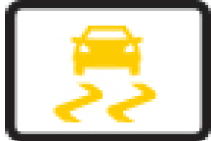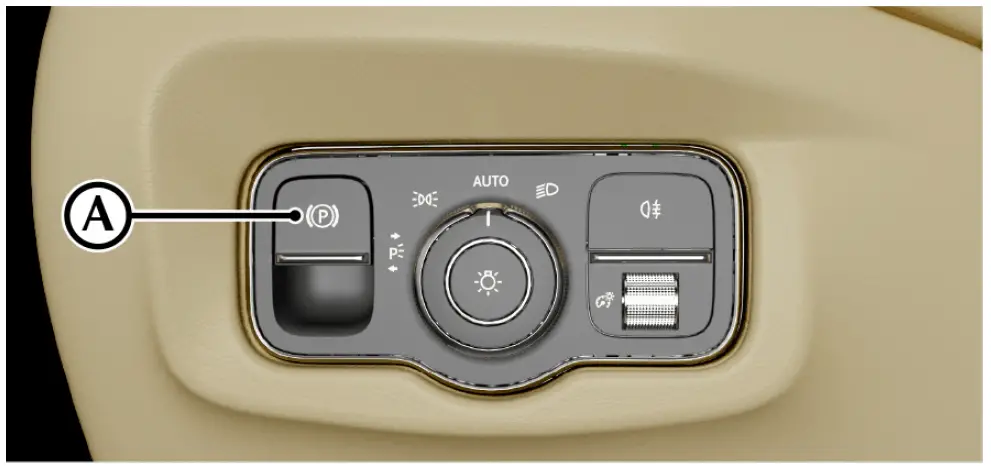Brake Warnings: 2021 Aston Martin DB11 Anti-Lock Brakes User Manual
The 2021 Aston Martin DB11 is equipped with an advanced Anti-Lock Braking System (ABS) that improves safety and control when braking. This system is created to avoid wheel lock-up and skidding, particularly during sudden braking, by adjusting brake pressure to each wheel separately. The ABS system in the DB11 constantly keeps track of wheel speed and adapts braking force as needed to maintain the best traction and stability on different types of roads. Aston Martin’s dedication to state-of-the-art technology shines through in the incorporation of this advanced braking system, offering drivers assurance and tranquillity while driving. The ABS system in the DB11 enhances braking efficiency and plays a crucial role in enhancing the vehicle’s handling and performance. The 2021 Aston Martin DB11 establishes a new benchmark for safety and driving dynamics in the luxury sports car category with its precision engineering and cutting-edge features. Discover the smooth integration of power and handling with the Anti-Lock Brakes in the Aston Martin DB11.
Brakes User Guide
Brake System Overview
Footbrake
The footbrake uses a vacuum-boosted, dual (diagonal split) circuit hydraulic system with an Anti-lock Brake System (ABS).
Warning: In the event of a brake failure, bring the vehicle to a stop as soon as it is safe to do so. Do not continue to drive the vehicle. To do so could result in an accident or collision resulting in death or serious injury.
Warning: Greater care may be necessary after a long drive over salted or gritted roads or if driving in heavy rain, through water or a vehicle wash. Brake action may be delayed and increased braking pressure may be required.
Warning: Aston Martin recommends that the brake fluid is replaced before and after the vehicle is used for high-performance driving such as a track day. Failure to do so may result in greatly reduced brake performance. Contact your Aston Martin Dealer.
If a vacuum boost or a brake circuit fails, the footbrake will still operate, but with greater pedal pressure, increased pedal travel, and longer stopping distances. Contact your Aston Martin Dealer.
(V12 Engine Only)
Vacuum boost is only available with ignition at position II or while the engine is running.
The high-performance braking system used on this vehicle is designed to provide optimal braking under all operating conditions. However, an inherent characteristic of this braking system is some brake noise. Certain combinations of speed, braking forces, and ambient conditions may also cause the brakes to squeal.
Brake Throttle Override
If the throttle and brake pedals are both pressed at the same time for over 3 seconds, the engine will restrict available torque. Normal functionality will return when the throttle pedal is pressed without the brake pedal.
2021 DB11 Brake Warnings Owner’s Manual
Warning: If either brake warning symbol comes ON, you should immediately be prepared for increased stopping distances or partial failure of the braking system.
If the brake warning symbol  comes ON while driving, the brake system has a fault and braking performance may be affected.
comes ON while driving, the brake system has a fault and braking performance may be affected.
If the brake warning symbol  comes ON while driving:
comes ON while driving:
- The brake booster system has a fault and braking performance may be affected.
- The brake fluid level is insufficient.
A message will also show in the instrument cluster window with further information.
Stop as soon as possible in a safe and convenient place. Apply the footbrake and make sure that the parking brake is fully released. If the warning symbol stays ON, do not drive the vehicle. It is essential that the brake system is checked immediately. Contact the nearest Aston Martin Dealer.
ABS Warnings
Warning: If the ABS warning symbol comes ON, you should be aware that wheels could lock during extreme braking or when braking on slippery surfaces.
ABS is monitored for correct operation while the ignition is ON.
If a fault is detected, the
 will come ON and the ABS will be either partly or fully OFF. Normal braking will continue to function without ABS.
will come ON and the ABS will be either partly or fully OFF. Normal braking will continue to function without ABS.
In the event of an ABS fault, have the braking and ABS systems checked immediately by an Aston Martin Dealer.
ABS and Electronic Stability Program (ESP) Warnings
Warning: If the ABS and ESP warning symbols come ON, you should be aware that wheels could lock during extreme braking or when braking on slippery surfaces. Steering performance can also function differently and there is an increased risk of skidding and/or accident.
If 

, and 
come ON while driving both ABS and ESP have a fault. The brake system will continue to operate but without assistance from either ABS or ESP. Both front and rear wheels may lock under heavy braking which can result in longer braking distances in an emergency stop.
A message will also show in the right instrument cluster window with further information.
Drive on carefully and have the braking and ABS systems checked immediately by an Aston Martin Dealer.
Anti-Lock Braking System
The Anti-lock Braking System (ABS) helps prevent the road wheels from locking and causing the vehicle to skid during emergency braking. This also assists the driver in maintaining steering and directional stability.
If the braking force exceeds type grip in an emergency braking situation, the ABS operates to prevent the wheels from locking. A pulsating effect is felt through the brake pedal when this happens. This is a normal effect of the ABS operating.
Two-Stage ABS
The ABS features two levels of calibration that change depending on the Electronic Stability Program (ESP) setting (Refer to ’ESP Modes’, page 5.23).
Safety
It is always the driver’s responsibility to drive safely with regard to driving conditions and according to the law. The fact that a vehicle is equipped with ABS must never let the driver be tempted into taking risks which could affect his or her safety or that of other road users.
The addition of ABS cannot overcome the consequences of trying to stop in too short a distance, cornering at too high a speed, or aquaplaning (where the tyres are prevented from contacting the road surface by a layer of water).
The driver should always take road conditions into account. A slippery road surface always requires more braking distance for a given speed, even with ABS. Stopping distances can increase with ABS compared to locked wheels on slushy snow, gravel, sand or certain heavily corrugated or ridged warning sections of road surfaces. If any braking system malfunctions, have the braking and ABS systems checked immediately by your Aston Martin Dealer.
Brake Pad Conditioning
Warning: For track use or high-speed driving, new brake pads must be correctly conditioned. Failure to correctly condition the pads may result in greatly reduced brake performance. Contact your Aston Martin Dealer for further information.
When new brake pads are installed the brake discs and pads need to be conditioned. During this time, brake performance will be reduced.
Avoid excessive braking, such as hard stops from high speed and steep descents, for the first few hundred miles or kilometres after new brake pads are installed. Park Brake
Park Brake Operation
Warning: If the brake system warning symbol is ON or flashing, do not rely on the park brake to hold the vehicle stationary. Contact your Aston Martin Dealer.
When the vehicle is stationary, push the park brake switch (A) in and release. The warning symbol in the instrument cluster will come on when the park brake is applied. The stop lamps will not come ON.
- Distances can vary depending on driving conditions and frequency of brake use
The parking brake operates on the rear wheels of the vehicle.
Caution:
Secure parking of the vehicle is dependent on being on a hard and stable surface. The rear wheels must be on a suitable surface to prevent vehicle movement.
The ignition control must on to release the park brake. First apply pressure to the foot brake then pull on the park brake switch and release. The symbol will go off to show the park brake has been released.
Drive Away Release
Warning: Do not exit the vehicle with the engine operating and the transmission in D (Drive) or R (Reverse). Always select P (Park) before exiting the vehicle. If the transmission is left in D (Drive) or R (Reverse) , the vehicle can overcome the park brake and start to move.
With the park brake applied, select a forward or reverse gear and press the throttle pedal. The park brake will release as the vehicle moves forwards or backwards.
The park brake will not release when moving from stationary if a vehicle door is open. In this case the park brake must be released with the park brake switch.
Park Brake Operation While Moving
Warning: Repeated use of the park brake to slow the vehicle, or driving the vehicle with the park brake applied can cause serious damage to the brake system.
In an emergency, push and hold the park brake switch to reduce speed. The 
a symbol will come on, a warning sound will be heard and CAUTION PARK BRAKE APPLIED will be shown in the right instrument cluster window.
Release the switch to cancel the park brake application whilst the vehicle is moving. The park brake will only apply as normal once the vehicle has stopped movement.
Park Brake Faults
Low Battery Voltage
If the battery voltage is too low, the park brake cannot be put on or off. Connect an auxiliary battery if the battery voltage is too low.
System Faults
If a fault in the system is detected, PARK BRAKE MALFUNCTION will show in the message center. Contact your nearest Aston Martin Dealer.
If the battery has been discharged or disconnected, APPLY FOOT AND PARK BRAKE will show in the message center when the ignition is next ON. Press the foot brake down and pull the park brake switch up to put the park brake ON, this will reset the park brake system.
FAQ’s
The ABS warning light signals a malfunction or issue with the Anti-Lock Braking System. It is crucial to address this promptly to maintain optimal brake performance.
The ABS warning light may illuminate due to various reasons, such as a sensor malfunction, low brake fluid, or issues with the ABS pump. A diagnostic check is recommended.
While the vehicle is still operable, it is advised to have the ABS system inspected as soon as possible to ensure the brakes function effectively, especially during emergency situations.
The Anti-Lock Braking System prevents wheel lock-up during hard braking, enhancing vehicle control and stability. It modulates brake pressure to individual wheels, optimizing stopping power.
Regularly check the brake fluid level in the reservoir and ensure it is within the recommended range. Low brake fluid can trigger the ABS warning light.
Intense driving conditions, such as heavy braking or driving on slippery surfaces, may trigger the ABS warning light if the system detects anomalies. Have it checked if the light persists.
Intermittent flashing may indicate a temporary issue. However, it is advisable to have the ABS system inspected promptly to prevent potential brake failure.
The ABS system enhances safety by preventing wheel lock-up, allowing the driver to maintain steering control during emergency braking situations.
The vehicle’s onboard diagnostics may perform self-checks, and if an issue is detected, the ABS warning light will illuminate.
While disconnecting the battery may clear some warning lights, it is not a recommended method for addressing ABS issues.
The ABS sensors are designed for durability, but their lifespan can vary. Regular maintenance and prompt attention to warning lights can help identify and address sensor issues.
FAQ’s
View Full User Guide: Aston Martin DB11 2021 User Guide | Auto User Guide
2021 Aston Martin DB11 Driving Techniques | Engine Start Guide
2021 Aston Martin DB11 Warning Labels | Before Driving Guide


